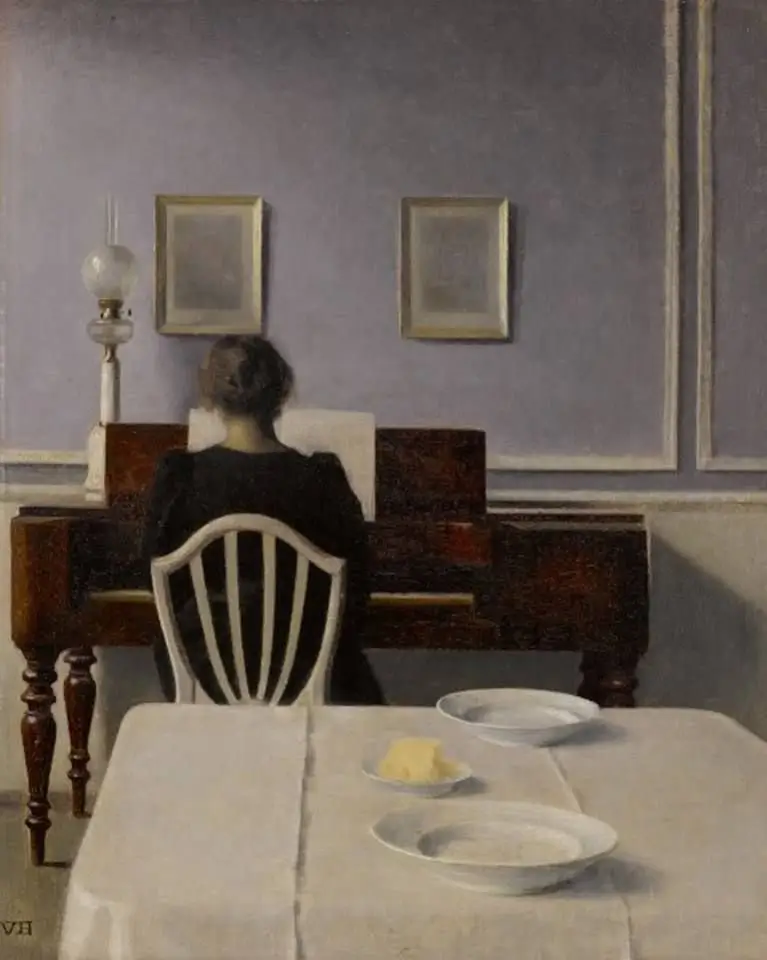Repetition Compulsion is one of the fundamental concepts in psychoanalysis, first introduced by Sigmund Freud and later expanded upon in contemporary theories such as Object Relations and Self Psychology, which provided new interpretations and perspectives. This article begins by examining Freud’s original formulation of Repetition Compulsion and then explores the views of theorists such as Sándor Ferenczi and Anna Freud. It concludes with a comparative analysis of modern approaches, including Object Relations and Self Psychology. This theme lies at the core of Repetition Compulsion in Psychoanalysis. [ Read More: Metaphor Therapy , When the Language of Imagery Heals the Psyche ]
Classical Psychoanalysis: Sigmund Freud’s Perspective on Repetition Compulsion in Psychoanalysis
Sigmund Freud, the founder of psychoanalysis, introduced the concept of Repetition Compulsion to describe the unconscious tendency to reenact traumatic or unresolved past experiences. In his seminal work Beyond the Pleasure Principle (1920), Freud observed that individuals are often driven to repeat painful experiences in their lives. This phenomenon, which seems to contradict the Pleasure Principle, can bring about suffering and anxiety rather than pleasure.
According to Freud, Repetition Compulsion arises from an unconscious attempt to reconstruct and master past conflicts in order to eventually resolve them. These behaviors frequently emerge in the therapeutic relationship through transference, where the patient reenacts early experiences within the relationship with the analyst (Freud, 1920/1955).
The Views of Sándor Ferenczi and Anna Freud
Sándor Ferenczi
Ferenczi emphasized the role of early childhood trauma and primary relationships in the formation of Repetition Compulsion. He believed that repetitive behaviors reflect an unconscious effort to make sense of, or regain control over, traumatic situations. According to Ferenczi, individuals may unconsciously recreate circumstances similar to those of their childhood trauma in adulthood as an attempt to gain mastery over them (Ferenczi, 1933). This contributes to broader discussions of Repetition Compulsion in Psychoanalysis.
Anna Freud
Anna Freud, in her work on defense mechanisms, considered Repetition Compulsion as a defensive process aimed at managing unresolved anxiety. She stressed the importance of the child’s early environment and relationships in the development of this phenomenon. In her view, repetitive behaviors serve as unconscious strategies to reduce internal conflict and anxiety (Freud, A., 1936).
Contemporary Psychoanalysis: The Object Relations Approach and Repetition Compulsion in Psychoanalysis
Object Relations theory, developed by figures such as Melanie Klein, W. R. D. Fairbairn, and Donald Winnicott, reinterprets Repetition Compulsion within the framework of early interpersonal interactions and the internalization of these relationships.
Melanie Klein
Klein viewed Repetition Compulsion as part of the child’s psychological effort to manage and integrate positive and negative experiences associated with internal and external objects. She linked this behavior to primitive defense mechanisms such as splitting and projection. According to Klein, through the repetitive reconstruction of early relational patterns, the individual strives for greater psychic integration (Klein, 1946).
W. R. D. Fairbairn
Fairbairn argued that Repetition Compulsion arises from unsatisfactory early relationships with primary caregivers, which become internalized as “bad objects.” He saw repetitive behaviors as unconscious attempts to repair or transform these internalized relationships. In contrast to Freud, who emphasized instinctual drives, Fairbairn located the source of Repetition Compulsion in the individual’s internalized object world — the psychological residue of early attachments (Fairbairn, 1952).
Donald Winnicott
Winnicott interpreted Repetition Compulsion as the individual’s attempt to recreate a “transitional space” — a psychological environment that balances inner and outer reality. He viewed repetitive patterns as expressions of the need to restore a sense of safety and holding that may have been missing or disrupted during childhood (Winnicott, 1960).
The Self Psychology
The Self Psychology approach, founded by Heinz Kohut, reframed Repetition Compulsion as a manifestation of unmet developmental needs rather than as a purely defensive or instinctual process.
Heinz Kohut’s View on Repetition Compulsion in Psychoanalysis
Kohut proposed that repetitive behaviors represent the individual’s unconscious attempt to fulfill early unmet needs for empathic attunement and self-cohesion. Through repetition, individuals seek to find an appropriate selfobject — a person or relationship that can provide the mirroring, idealization, or twinship functions necessary for the restoration and strengthening of the self (Kohut, 1971).
Conclusion: Understanding Repetition Compulsion in Psychoanalysis
Across psychoanalytic traditions, Repetition Compulsion reflects the enduring human effort to heal and integrate past experiences. While Freud viewed it as an expression of instinctual drives and unresolved conflicts, contemporary theorists such as Ferenczi, Klein, Fairbairn, Winnicott, and Kohut have reframed it as a relational and developmental process. Ultimately, Repetition Compulsion underscores the psyche’s inherent drive not only to repeat but also to transform — to find new meanings and restore psychological wholeness through relationships, both within and beyond the therapeutic encounter.










